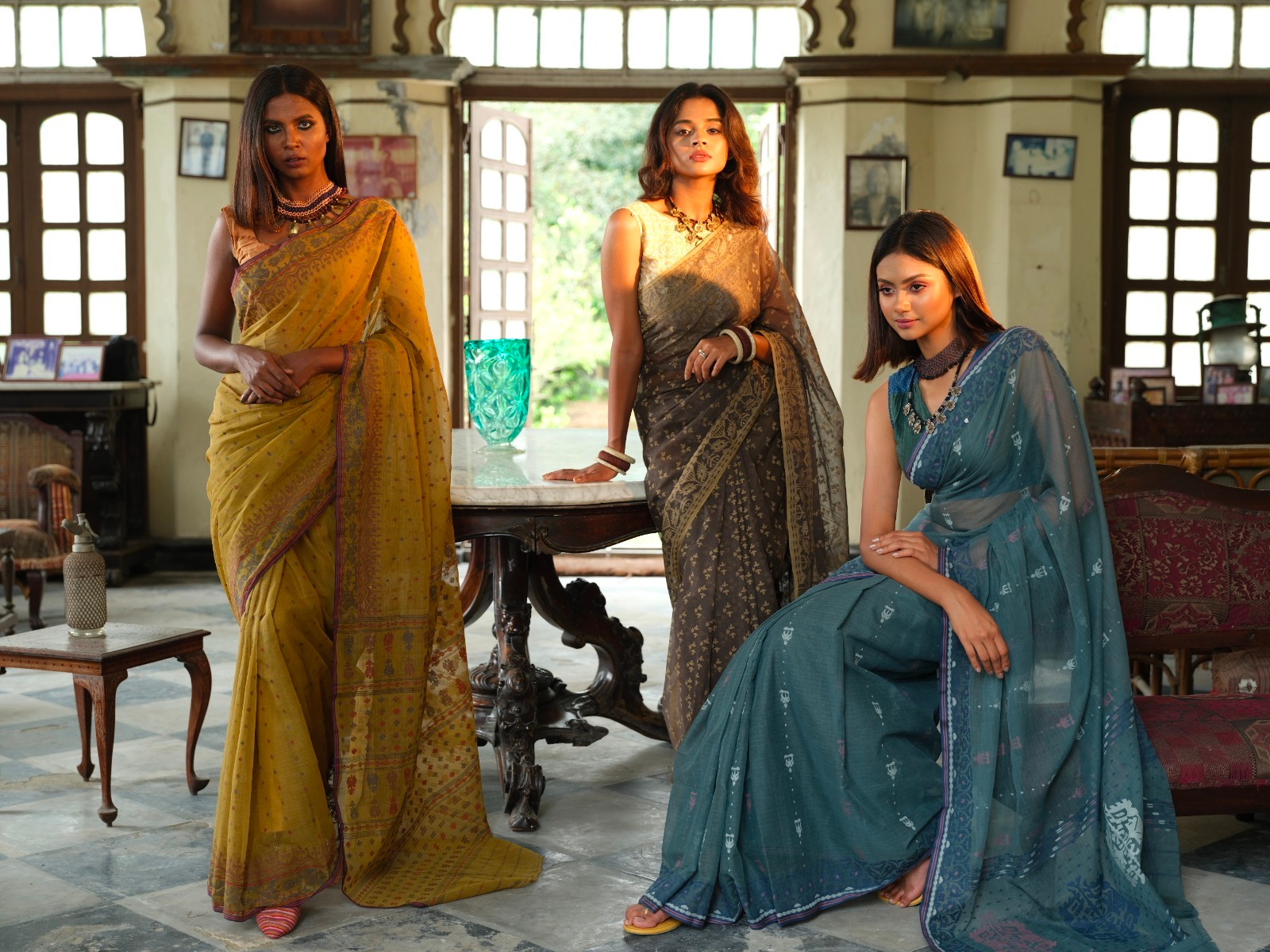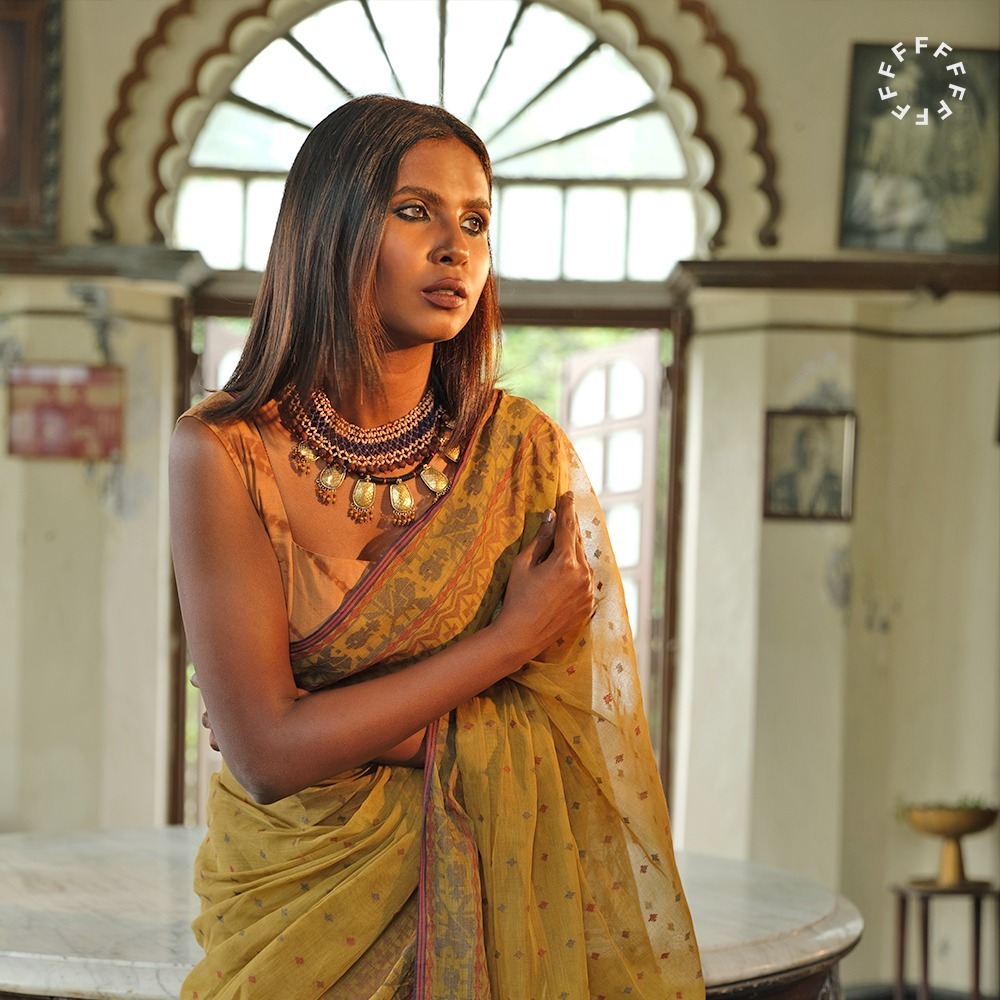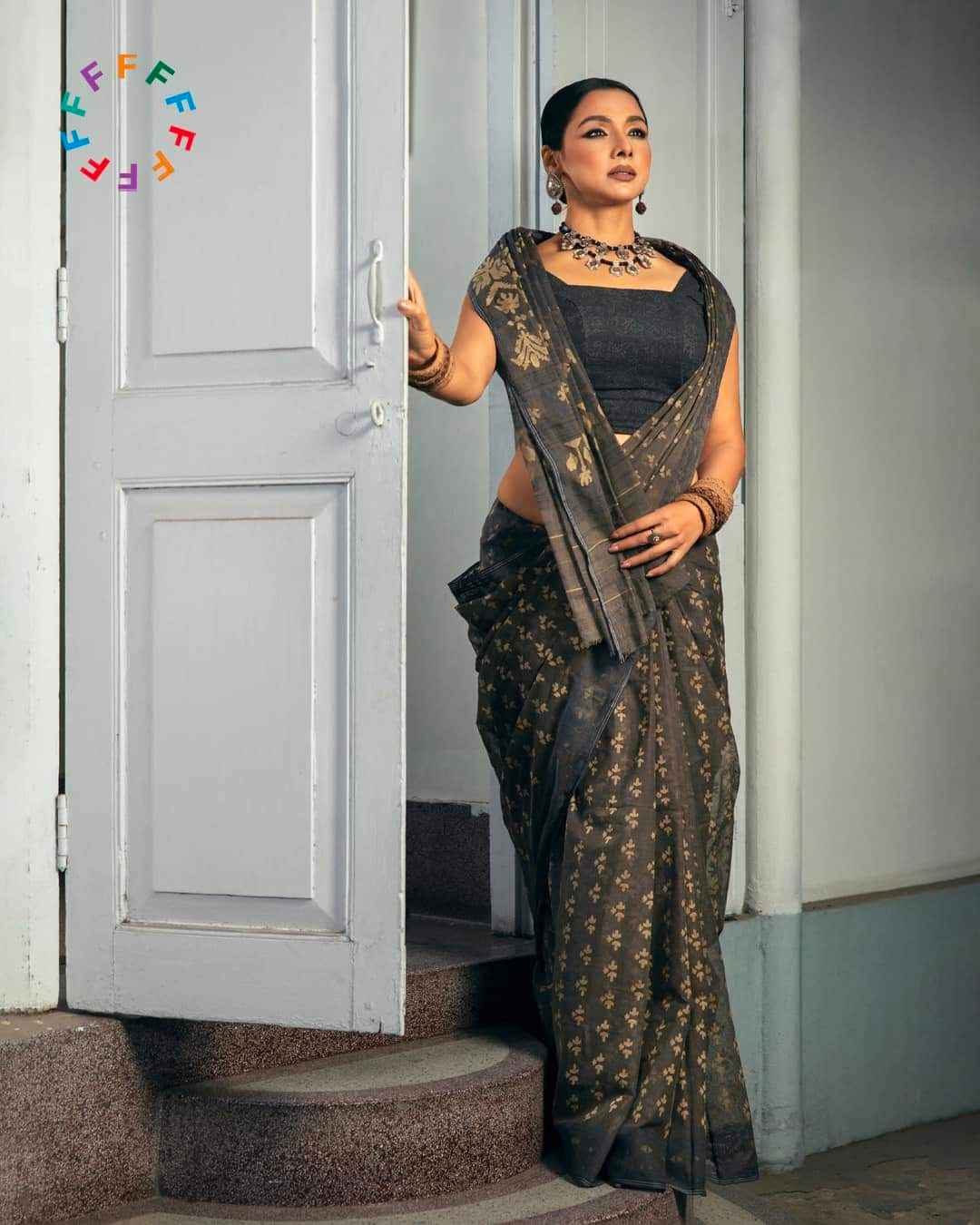Reviving the Ancient Art of Jamdani Weaving
An ancient craft at risk of dying out and the attempts to revitalise it for a global audience
Jamdani is considered by those who are familiar with the craft as one of the most time-consuming and labour-intensive forms of textile production in the world. Usually used to create saris, what makes this weaving special is that instead of being sketched or outlined beforehand, the geometric patterns and motifs are woven directly onto the sari by hand based on the ideas a weaver has in their head.
Because Jamdani saris are completely handmade there is a lot of skill and time involved, making it a luxurious and expensive product. A Jamdani sari bought online, such as on Aarong, can cost $300 - $900. This high price tag for the fabric makes it only available to a very slim few to purchase, an issue that persists today.
Growing up in the Bangladeshi diaspora I always heard aunts at events discussing Jamdani saris and how beautiful they were in lofty and reverent tones. This was my first introduction to how Jamdani was so inextricably linked to Bengali identity.
Despite Jamdani’s long and decorated history, many weavers today are choosing to leave the profession because of how little they get paid for the time and labour involved in making a sari, which can take several months to years to produce. During this time a weaver can expect to be paid about $35 - $40 a month for their work, earning more or less depending on the skill and complexity.
"It takes a pair of weavers...between six months to several years to make one Jamdani sari"
Imam Hassan, a designer working with Jamdani and collaborating with an NGO focusing on ethical fashion, says that because Bangladesh is not as economically developed yet as other countries there is not a large customer base that can afford to buy Jamdani clothing.
Jamdani is most popularly used to weave intricate and vividly designed sheer cotton saris. The woven motifs take their inspiration from nature through local plants and animals. For centuries these patterns have been passed down through memory with names such as; lau-pata, or bottle gourd leaves, and mayura, or peacock.
Usually, it takes a pair of weavers working together for 10 hours to produce an inch of Jamdani fabric and between six months to several years to make one Jamdani sari, depending on the intricacy of the motifs.
“The fabric was so incredibly fine that it had been described as being as delicate as a shadow and appearing to be as if woven by air…”
Another issue facing the industry is that the quality of Jamdani isn’t the same as it was originally. Dhaka muslin was traditionally used as the base to make Jamdani saris. The now-lost cotton used to make this muslin only grew along the banks of the Meghna River in an area south of Dhaka.
The fabric was so incredibly fine that it had been described as being as delicate as a shadow and appearing to be as if woven by air, even causing a scandal in 18th-century Europe due to its transparency.
The muslin was said to be so delicate that it could only be reeled in high humidity over water by adolescent girls because it was thought that their hands were the softest to avoid breaking the material. This is why local organisations started installing humidity measuring machines in the workshops of many weavers to determine whether certain levels created higher-quality saris.
Efforts to revive the original cotton plant have been ongoing with the Bangladeshi government setting up several protected areas with restricted access so that the cotton can grow unhindered.
Although efforts to revive the original cotton plant are proving successful, weavers have been increasingly leaving the craft and becoming farmers or working in shops. Others who remain are encouraging their children to take up more profitable professions, endangering the longevity of the craft.
Hassan says: “It is an impossible task where a weaver can create such intricate and vivid motifs over several years by only using their mind and hands. It is this skill and composition that makes Jamdani truly special because it isn’t seen anywhere else in the world.”
According to Tanjena Mahbub, an associate professor at Shanto Mariam University of Creative Technology, this exodus of weavers is one of the most pressing problems facing the industry. Despite the huge popularity among customers, there is no longevity because of the weavers leaving the craft. She thinks that once this hurdle is overcome and they can be properly paid for their labour, the industry will start to thrive.
Other attempts to keep the fabric alive include a collaboration in 2016 between the London College of Fashion and the Muslin Trust, an organisation aimed at preserving and promoting Bengali heritage fabrics. Together they designed Regency-era evening gowns using Jamdani fabric.
Saif Osmani, who works with the Muslin Trust, says that he found information falling through generational gaps between those with knowledge regarding this form of textile production. This is why he worked closely with weavers in villages that specialised in muslin production. He then brought those pieces to London for students to design using their creativity and knowledge.
Osmani also worked with the V&A Museum to continue representing Jamdani internationally in London during the pandemic lockdown.
International fashion houses have increasingly shown interest in using Jamdani for their designs. Bibi Russell, a renowned designer, has been working with weavers in Bangladesh to create Jamdani designs beyond saris, such as shirts and scarves, to sell in Paris.
Mahbub has also stated that her own students have shown interest in using heritage fabrics like muslin and taking inspiration from their own culture instead of looking abroad or using foreign fabrics like satin in their designs.
According to Hassan, no matter how much time passes or how modern society becomes, a Bengali woman will always have a Jamdani sari in her wardrobe because no other clothes will ever compare.
He says that there’s been a resurgence in the current generation in wearing clothes that are designed and made in Bangladesh because it is seen as more sustainable.
The perception of clothes made in Bangladesh being low-quality and made in sweatshops has been shifting to one where clothes are made in a design-led industry with high-quality standards. There have also been efforts to make innovative modern designs while respecting ancient original motifs.
Osmani states that Bengali garments have historically had a mythic quality and that this trend of supporting the local industry is a natural progression in returning to that former glory.
Regarding the importance of Jamdani, Hassan says: “Jamdani itself is one of the finest handicrafts in the world that originates only in Bangladesh. Jamdani is the pride of Bangladesh. That is why it is important to support the industry; learn about Jamdani; seek out Jamdani and buy Jamdani.”




Post a comment